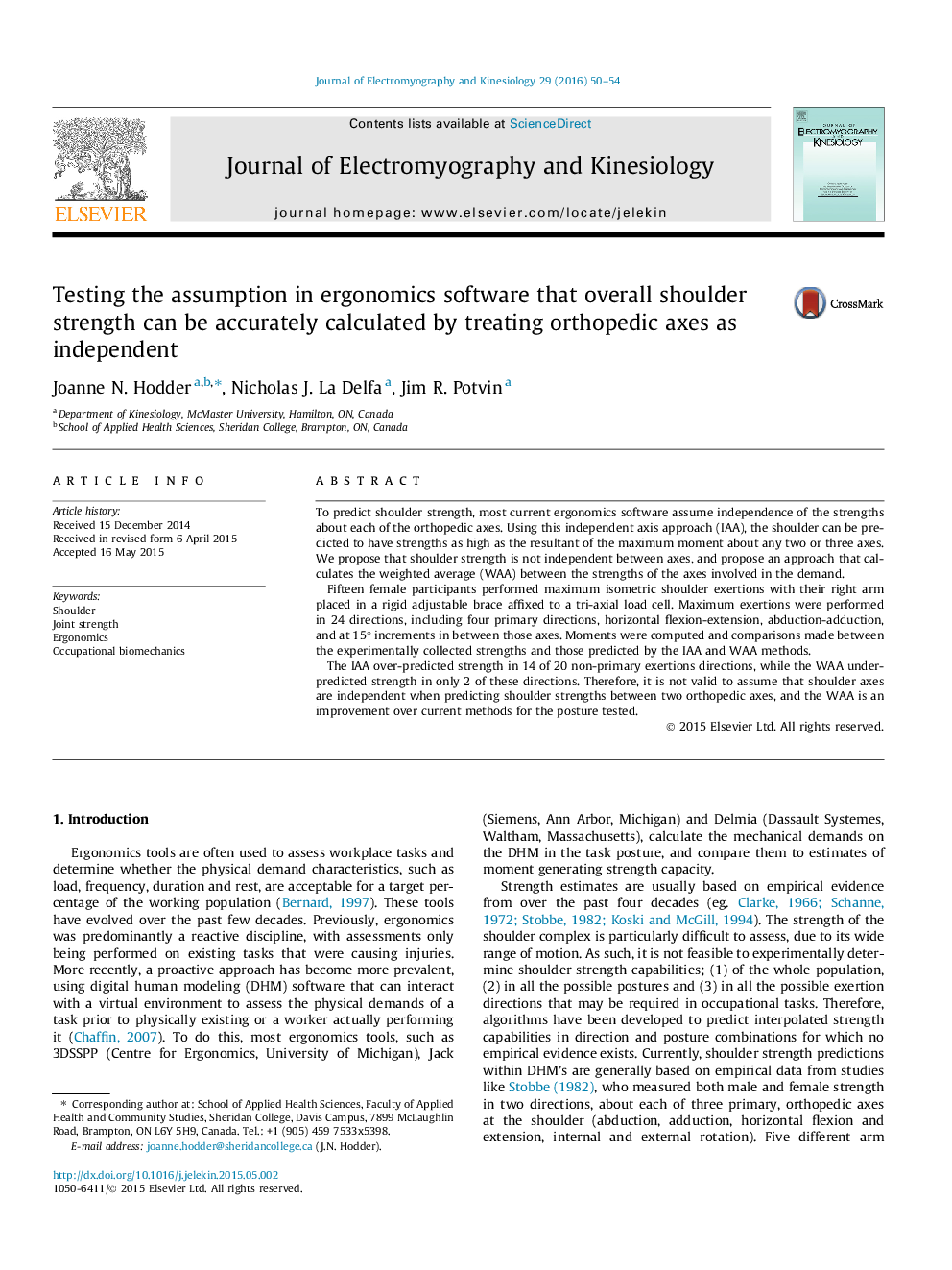| کد مقاله | کد نشریه | سال انتشار | مقاله انگلیسی | نسخه تمام متن |
|---|---|---|---|---|
| 6210252 | 1604184 | 2016 | 5 صفحه PDF | دانلود رایگان |
To predict shoulder strength, most current ergonomics software assume independence of the strengths about each of the orthopedic axes. Using this independent axis approach (IAA), the shoulder can be predicted to have strengths as high as the resultant of the maximum moment about any two or three axes. We propose that shoulder strength is not independent between axes, and propose an approach that calculates the weighted average (WAA) between the strengths of the axes involved in the demand.Fifteen female participants performed maximum isometric shoulder exertions with their right arm placed in a rigid adjustable brace affixed to a tri-axial load cell. Maximum exertions were performed in 24 directions, including four primary directions, horizontal flexion-extension, abduction-adduction, and at 15° increments in between those axes. Moments were computed and comparisons made between the experimentally collected strengths and those predicted by the IAA and WAA methods.The IAA over-predicted strength in 14 of 20 non-primary exertions directions, while the WAA underpredicted strength in only 2 of these directions. Therefore, it is not valid to assume that shoulder axes are independent when predicting shoulder strengths between two orthopedic axes, and the WAA is an improvement over current methods for the posture tested.
Journal: Journal of Electromyography and Kinesiology - Volume 29, August 2016, Pages 50-54
